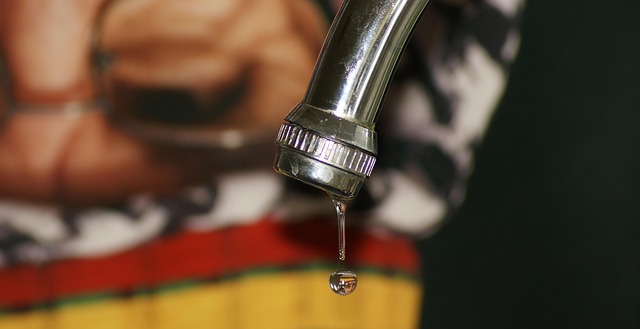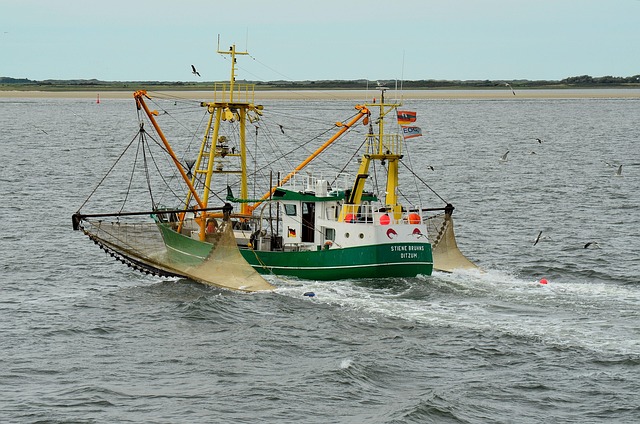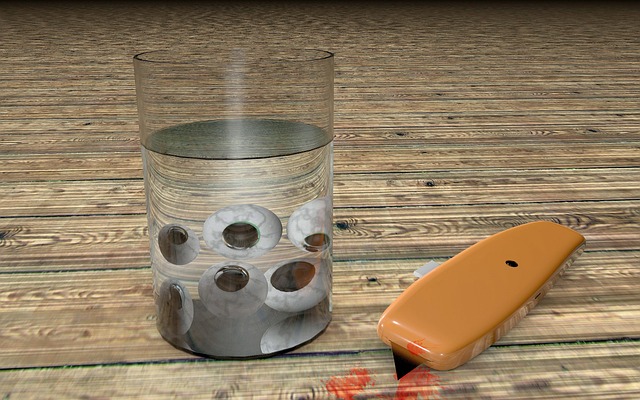Water line leaks, caused by aging pipes, corrosion, frozen pipes, or poor maintenance, can lead to significant damage, financial losses, and operational disruptions. Advanced leak detection technologies like infrared thermal imaging, ground-penetrating radar (GPR), acoustic sensors, and smart water meters offer faster, more precise identification compared to traditional methods. These innovations reduce water waste, lower repair costs, and contribute to sustainable infrastructure. Prompt action by professionals using advanced tools is crucial for efficient leak detection and repair, preventing structural damage and mold growth. Regular maintenance, including pipe inspections and insulation, is also effective in leak prevention.
Water line leaks are a common plumbing issue, causing significant damage and wasting precious resources. This comprehensive guide delves into the world of leak detection, exploring traditional methods and advanced technologies. We examine the common causes of water line leaks, their impact on your property, and how to effectively locate them using non-invasive techniques. Additionally, we offer preventative measures and expert advice on when to call for professional repair, empowering you to protect your plumbing system from these costly and inconvenient problems.
Understanding Water Line Leaks: Common Causes and Impact

Water line leaks can be a nuisance, causing significant damage if left undetected. Understanding their common causes is essential for effective leak detection. The most frequent culprits include aging pipes, corrosion, frozen pipes, and poor installation or maintenance. As water lines age, they weaken, leading to cracks or holes that permit water to escape. Corrosion, often accelerated by mineral buildup, can also weaken pipe structures.
The impact of these leaks extends beyond immediate financial losses due to wasted water and elevated utility bills. Prolific leaks can damage surrounding materials, promote mold growth, and disrupt homes or business operations. Prompt leak detection is crucial for minimizing these impacts. By utilizing advanced technologies like infrared thermal imaging and ground-penetrating radar, professionals can quickly identify the source of a leak, enabling efficient repair and preventing further complications.
Traditional Leak Detection Methods: Pros and Cons

Traditional leak detection methods have relied on several techniques for years, each with its own advantages and drawbacks. One common approach involves visual inspection, where trained professionals manually check for signs of water damage, such as stains or mold growth. This method is cost-effective and doesn’t require specialized equipment but can be time-consuming and may not detect leaks hidden behind walls or under floors.
Another traditional method is the use of audible or visual indicators like dripping sounds or pressure gauges. While these are straightforward and effective for immediate confirmation, they might not always pinpoint the exact location of a leak, leading to further damage before repair. With advancements in technology, more sophisticated techniques have emerged, offering faster, more precise leak detection, but they often come with higher costs.
Advanced Technology in Water Line Leak Detection

In the realm of water line leak detection, advanced technology has revolutionized the way we identify and address these critical issues. Modern methods go beyond traditional techniques, employing sophisticated tools and data-driven insights to pinpoint leaks with unprecedented accuracy. For instance, acoustic sensors and ground-penetrating radar (GPR) are now commonly used to detect even the smallest leaks beneath the surface. These technologies send signals that bounce back when they encounter an anomaly, such as a leak in the water lines, providing precise locations without the need for excavation.
Additionally, smart water meters and real-time monitoring systems offer continuous data on water usage, pressure, and flow rates. By analyzing this data, utility companies can quickly identify unusual patterns that may indicate leaks. These advanced technologies not only enhance the efficiency of leak detection but also help in minimizing water waste and reducing repair costs. In terms of Leak Detection, these innovations represent significant steps towards a more sustainable and resilient infrastructure.
Non-Invasive Techniques for Locating Leaks

Non-invasive techniques have revolutionized leak detection, offering efficient and effective solutions without causing damage to underground infrastructure. These methods employ advanced technologies such as ground-penetrating radar (GPR) and acoustic wave analysis to identify leaks in water lines. GPR uses radio waves to create detailed images of the subsoil, allowing professionals to detect anomalies like buried pipes and potential leak sources. Acoustic wave analysis, on the other hand, sends sound pulses through the ground and measures their reflection, pinpointing exact locations of weaknesses or breaks in the pipe structure.
By utilizing these non-invasive techniques, water utility companies can proactively locate leaks before they cause significant damage or disrupt service. This not only saves on costly repairs but also minimizes interruptions to residents and businesses relying on reliable water supply. Moreover, non-invasive leak detection methods are environmentally friendly, ensuring minimal disturbance to the surrounding area during the inspection process.
When to Call a Professional for Leak Repair

If you’ve noticed persistent water bills that seem inexplicably high, repeated instances of low water pressure, or strange noises coming from your pipes, it might be time to call a professional for leak repair. While minor leaks can sometimes be addressed by homeowners using DIY kits or simple repairs, persistent or widespread leaks often indicate problems that require specialized equipment and expertise to accurately diagnose and fix.
Professional plumbers are equipped with advanced leak detection tools, such as moisture meters and cameras, which allow them to identify the source and extent of a leak efficiently. They can also perform comprehensive pipe inspections to ensure that all potential areas of concern are addressed. Moreover, professionals have access to high-quality repair materials and technologies designed to prevent future leaks, ensuring your plumbing system’s longevity and minimizing water waste—a critical aspect of effective Leak Detection.
Preventative Measures: Maintaining Your Plumbing System

Regular maintenance is key to preventing water line leaks, a crucial aspect of leak detection. Homeowners should schedule routine inspections and checks for their plumbing systems. This includes examining pipes for any signs of corrosion, damage, or abnormalities. Catching potential issues early can prevent small problems from escalating into costly leaks.
Implementing preventative measures such as insulation in colder regions, where pipes are more susceptible to freezing and bursting, is essential. Additionally, staying vigilant about unusual water pressure changes or noises within the plumbing can indicate underlying problems that require prompt attention. Regular maintenance ensures your plumbing system operates efficiently, reducing the likelihood of unexpected leaks.
